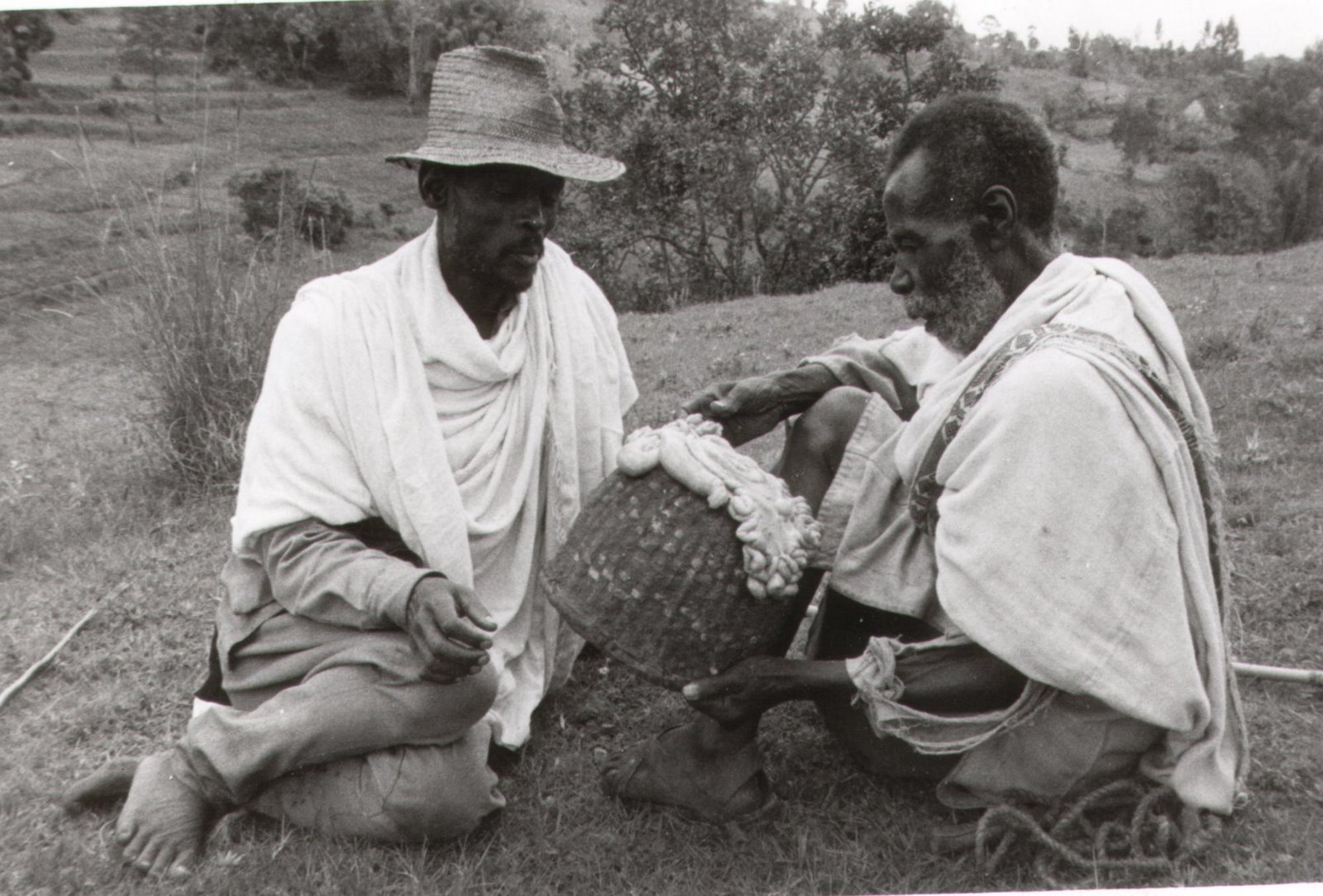Picture of the week: enteromancy among the Dorze of Southern Ethiopia
This picture, taken in 1969, shows two Dorze elders discussing how to interpret the entrails of a lamb that had just been slaughtered.

The pattern of blood vessels on the entrails represents genealogical relationships and blemishes show which of these relationships (with the living or with the dead) need mending.

Not quite your standard case of a cognitive tool or or of distributed cognition, but...




Christophe Heintz 25 October 2008 (17:42)
I see two points that can be made on the basis of these pictures: The first point is about the need to study non standard cases of cognitive tools Studies about distributed cognition and cognitive tools have been somewhat ethnocentric or techno-centric, in the sense that they mainly focused on tools originating from current information technology. The notion of ’cognitive tool’, however, is not restricted to computers and the like. In order to provide it with a full fledged anthropological significance, one would need to confront the notion of ’cognitive tool’ with a wider set of cultural phenomena, including none obvious ones found in small scale isolated societies. The second point is about the question that this unusual case of cognitive tool raises: what makes something be a cognitive tools? I say a few words about this question in the next comment.
Christophe Heintz 25 October 2008 (17:47)
The oddity of this cognitive tool leads us to ask what it is that makes something be a cognitive tool. Computers appear as obvious cognitive tools: they compute information and they are external to us (i.e. not part of our biological cognitive apparatus). Yet, if you had put a computer in the Dorze village in the 60’s, presenting it as a tool that provides information, I would imagine that they would have looked at it with much more bewilderment than us looking at the lamb entrails. This imaginary scene illustrates that a tool is only a tool for someone who knows how to use it. This eventually points towards some mental phenomena without which people would not use cognitive tools: people’s representations of the tool as such, their know-how for its use, and the mental phenomena that makes the tool cognitive: users take some stimuli originating from the cognitive tool as forming *representations* used for further cognitive process. These representations can be patterns of blood vessels, the position of the beads of an abacus or the graph image of a computer compiled function. I have argued that one key mental representation that stabilise the practices associated with cognitive tools is the representation of the tool as a reliable information provider for a certain type of task. It seems that it applies in the case of enteromancy. One traditional ethnographic question about practices can then be reframed as follow: why do representations ascribing cognitive functions to objects are spread and stabilised in the community? I have spelled out these considerations in a book chapter (in French): La sociologie de la cognition distribuée. In La sociologie cognitive, F. Clément and L. Kaufmann (eds). (Ask me for preprint), and in the third part of Scientific Cognition and Cultural Evolution, PhD Thesis, available at http://christophe.heintz.free.fr/thesis/
Dan Sperber 28 October 2008 (19:52)
Thanks to Christophe for his taking seriously my suggestion that entrails can be seen as a cognitive tool in enteromancy, and for his thoughtful comments. What kind of a cognitive tool are, then, these entrails when used in Dorze divination. What are their functions? They provide, on the one hand, a checklist of possible sources of mystical sanctions (displeased ancestors represented by specific blood vessels for example), and, on the other hand, through their peculiarities, they indication which of these possible sources is likely to be involved in the specific instance (an ancestor represented by a vessel with a blemish, for example). The issue of trust, raised by Christophe, is more prominent with respect to this indication function than with respect to the checklist function.